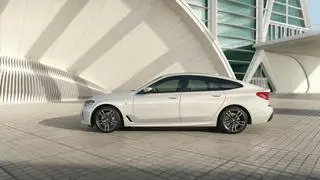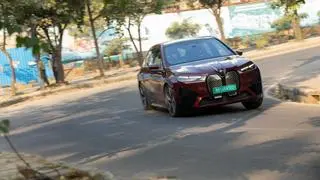Volvo Buses has had a good run in India since the time it set up shop here 15 years ago, with State governments and private operators continuing to queue up for vehicles. In an interview with BusinessLine , Hakan Agnevall, President, Volvo Bus Corporation, discusses the company’s road ahead in India.
With the closure of the Jawaharlal Nehru National Urban Renewal Mission scheme, which was helpful for companies like yours, how do you see the road ahead for Volvo Buses in India?
Ithink there needs to be another scheme in place and my understanding is that the Centre is contemplating something on these lines. I do believe it is in the interests of the people.
When we talked to government officials in various cities, there is a lot of awareness coupled with a desire to provide premium bus services to the public. If this were to happen, there needs to be some help in the form of financing.
The challenge is to encourage people to step out of their cars and start using public transport. This is desperately needed because of traffic congestion. However, public transport needs to be an attractive experience in terms of timeliness, cleanliness and so on.
How has your recent offering, UD city bus, been doing in the market?
We launched UD for commuters looking for good city bus services which are also affordable. Within this offering, there is a bus rapid transit (BRT) offering as well. Volvo Buses are part of a premium range and we are sort of trying to bridge the gap between what is premium and the mass market. We have recently bagged an order from Karnataka for 100 buses for BRT and will deliver it by the second quarter of next year. This will be largely for Tier 2 cities, where we are looking at a huge market for such applications.
How will this fit in a scenario where a host of cities are also going in for metro rail as a transport alternative?
A metro has much higher capacity and that fact cannot be disputed. However, its implementation takes 10 to 15 years and the cost difference is a factor of 20 to 50 times. This is where BRT scores and there are right now a couple of proposals on the table. We hope they get traction, because this is an easier way to move people away from personalised vehicles to public transport.
Can BRT, therefore, co-exist with metro rail in an urban landscape?
Yes, absolutely. What is necessary for BRT is to have a continuous flow. Its success depends on dedicated lanes that need to be created for public transport.
As for creation of flow, you need to do pre-ticketing which ensures passengers are ready with their tickets when the bus arrives. This is what creates the flow which is absolutely necessary.
You also need a traffic management system at the central point to check deviation. The entire system must also be branded with special vehicles like the UD bus that offer semi- highfloor options.
When these prerequisites come together, you get the BRT solution which can address the challenges of congestion.
What do you have to say about other mobility solutions such as Uber and Ola, which are gaining ground in India?
We are living in interesting times. In the commercial vehicle sector, developments in the next 10 years will be much higher than what have taken place in the previous decade. There are three kinds of technologies happening here. One is autonomous driving. The second is alternative drivelines and the third is what I term connectivity that is related to development of telecommunications, sensors and so on.
With this, we would be able to perfectly monitor all vehicles or traffic situations. Based on this data, we can provide services that will increase reliability and uptime utilisation of vehicles. But if all vehicles can become autonomous, is there a need for public transport? In such a scenario, you dial on a smartphone and order that little something to step into.
The Karnataka government had recently announced that Volvo Group would invest over ₹900 crore. Could you elaborate?
We never talk about investments. They can, of course, go ahead and announce, but from our side, we are not commenting on those figures.
What is your take on the recent ban on diesel vehicles in Delhi?
We have developed a number of diesel buses and also a CNG option but it has not come to fruition yet. My understanding is that situation in Delh is very clear on diesel and there are ways to look at different solutions.
So what happened to the CNG alternative?
Well, many years ago we developed that, but there were no orders at all.








Comments
Comments have to be in English, and in full sentences. They cannot be abusive or personal. Please abide by our community guidelines for posting your comments.
We have migrated to a new commenting platform. If you are already a registered user of TheHindu Businessline and logged in, you may continue to engage with our articles. If you do not have an account please register and login to post comments. Users can access their older comments by logging into their accounts on Vuukle.